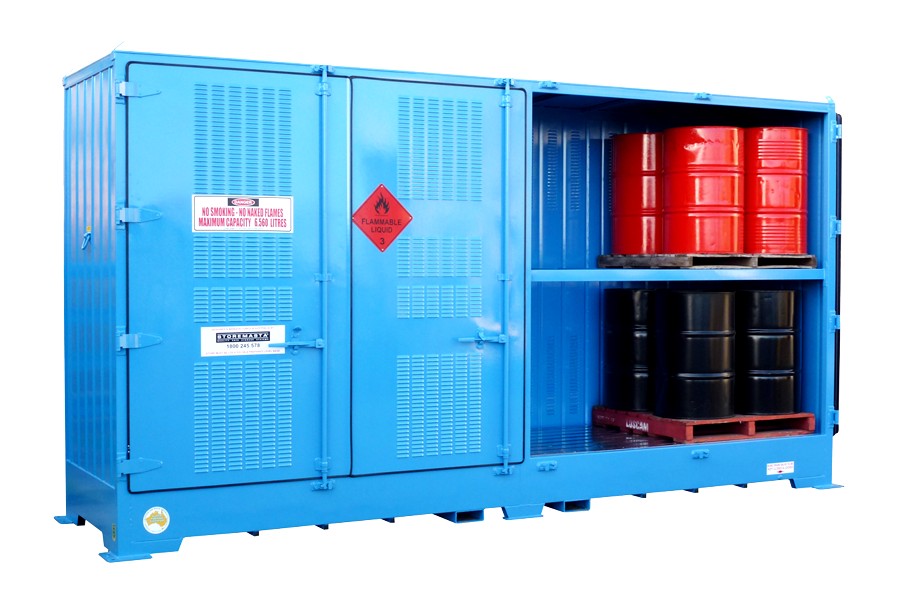
Modern industrial workspaces and laboratories are often characterized by the utilization of a wide range of substances, many of which pose varying degrees of risk to personnel, infrastructure, and the environment.
The management of hazardous materials is not only a concern for health and safety but also a regulatory imperative. As such, proper storage solutions, such as dg cabinets, are essential for maintaining safety and compliance in facilities handling dangerous goods.
The Importance of Adequate Hazardous Substance Storage
Effective storage systems are fundamental to avoiding accidents and mitigating the impact of potentially hazardous chemicals. Mishandled or improperly stored substances can lead to fires, explosions, chemical burns, and environmental contamination. It falls upon employers and facility managers to ensure that materials classified as dangerous goods are stored according to stringent safety standards.
In many jurisdictions, legislation dictates the proper handling and storage of dangerous goods. This includes specifying the types of safety cabinets required for different classes of chemicals and substances. Non-compliance not only endangers lives but can also subject organisations to hefty fines and legal repercussions.
Identifying Dangerous Goods
Prior to implementing storage solutions, it’s imperative to correctly identify and classify the materials within the workspace. Dangerous goods often include flammable liquids, oxidising agents, toxic or corrosive substances, and reactive chemicals. Each category of hazardous material may have specific storage requirements that need to be met.
Proper classification not only aids in selecting appropriate dg cabinets but also informs workers about the potential hazards associated with handling these materials. Understanding the nature of dangerous goods underpins every aspect of safe storage and usage.
Features of DG Cabinets
In response to the diverse array of dangerous goods, dg cabinets are designed to cater to specific needs. Key features might include fire resistance, chemical compatibility, ventilation systems, spill containment capabilities, and secure locking mechanisms. Each aspect of a DG cabinet’s design plays a critical role in safeguarding both the contents stored within and the surrounding environment.
The construction materials of dg cabinets are selected for their durability and resistance to the stored substances. Typically, steel or polyethylene can be used, depending on the type of chemicals and the level of risk involved. Robust design ensures that, even in the event of a spill or leak, the cabinet contains and isolates the hazard.
Selecting the Right DG Cabinets
Choosing the correct storage cabinet is a decision that must be made with care and due diligence. Factors to consider include the specific chemical properties of the dangerous goods, the volume of substances being stored, and the overall workflow of the workspace. Location is also crucial, as cabinets should be situated in a manner that facilitates easy, safe access and does not impede emergency egress.
Consulting with professionals and reviewing safety data sheets can provide guidance on the type of dg cabinets most suitable for your needs. Regulatory standards can serve as a benchmark for quality and performance, ensuring the safety and efficacy of the storage solution.
Training and Maintenance
Beyond selecting the right dg cabinets, ongoing training for staff is indispensable. Employees must be familiar with the usage and maintenance of the cabinets, including how to correctly store and retrieve hazardous substances. Regular drills and the dissemination of safety information contribute significantly to the promotion of a safety-conscious culture.
Maintenance of dg cabinets is another critical aspect. Inspections should be conducted regularly to ensure that cabinets remain in optimal condition and that any wear and tear is addressed to prevent any potential safety breaches. A well-maintained DG cabinet is integral to the longevity of both the cabinet and the security it provides.
Regulatory Compliance and Auditing
Compliance with relevant legislation and standards is not a one-time affair. Facilities must undergo regular audits to ensure that their hazardous substance storage systems, such as dg cabinets, continue to meet regulatory demands. Audits can uncover areas for improvement and reinforce a company’s commitment to safety.
Documentation is also a critical element in demonstrating compliance. Keeping detailed records of the substances stored, their quantities, and the maintenance history of storage equipment provides a clear trail of responsibility and safety efforts.
Risk Management
Integrating dg cabinets into a facility’s risk management strategy is an effective way to reduce the likelihood of incidents relating to dangerous goods. By systematically addressing the potential risks that hazardous materials pose, facilities can create a work environment that prioritises the wellbeing of employees and the public.
Risk assessments should be periodically revisited, taking into account any changes in the quantity or type of dangerous goods handled. As businesses evolve and expand, so too must their approach to hazardous substance storage adapt to the new risk profile.
The Bottom Line
The procuration of dg cabinets is a fundamental step in establishing a safe and responsible workspace. By adhering to best practices for the storage of dangerous goods, organisations not only safeguard their own interests but also contribute to wider community safety. Through the judicious selection, judicious use, and diligent maintenance of DG cabinets, workplaces can mitigate the inherent risks associated with the handling of hazardous materials, thereby fostering a culture of safety and compliance.
In conclusion, the deployment of dedicated dg cabinets should be regarded as an investment in workplace safety, environmental protection, and operational continuity. Establishing stringent storage practices ensures that businesses remain on the right side of the law, nurture their reputation, and secure the trust of their employees and customers. Thereby, these cabinets constitute a vital component in the blueprint of any responsible organisation dealing with hazardous products.
Recent Posts
- What’s Up Miss Lil: Harlem Cultural Festival Foundation Celebrates 55 Years Of Soul
- What’s Up Miss Lil: 2024 NYC Marathon Journey Through Harlem
- Mayor Adams Announces City Hall And Buildings To Shine Green For Youth
- Personal Injury Law Firm In Rhode Island And Car Accident Lawyers
- Sponsored Love: Choosing The Right Roof For Your Athens Home, Top Three Styles
- Trump’s Second Act: The Comeback Kid Returns To The Oval Office
- Sponsored Love: Safeguarding Workspaces With DG Cabinets, A Guide To Dangerous Goods Storage
- Celebrate Your Pup’s Personality With Custom Dog Socks 5 Creative Ways To Show Off Their Unique Style
- How To Use VPN On iPhone To Stay Safe On Public Wi-Fi
- The Ultimate Men’s Travel Kit: What to Wear For Comfort On The Go
- The Role Of AI in Modern Education: Enhancing Homework Help And Academic Resources
- Sponsored Love: 6 Assuregreen Secrets For A Greener, Healthier Yard
- Beyond Walls: Innovative Office Partition Ideas
- Accordion Walls: The Future Of Interior Design
- Locker Cabinets: Stylish And Functional Storage For Every Room
Become a Harlem Insider!
By submitting this form, you are consenting to receive marketing emails from: . You can revoke your consent to receive emails at any time by using the SafeUnsubscribe® link, found at the bottom of every email. Emails are serviced by Constant Contact








